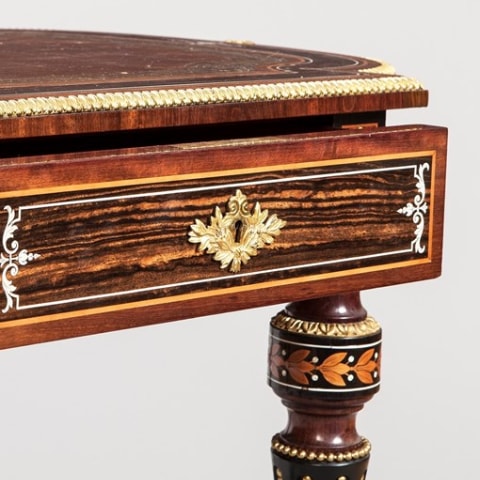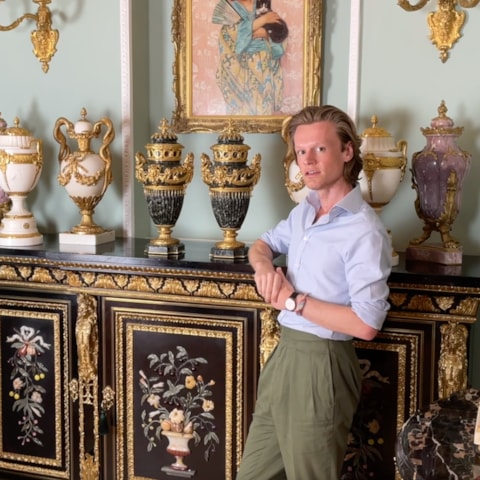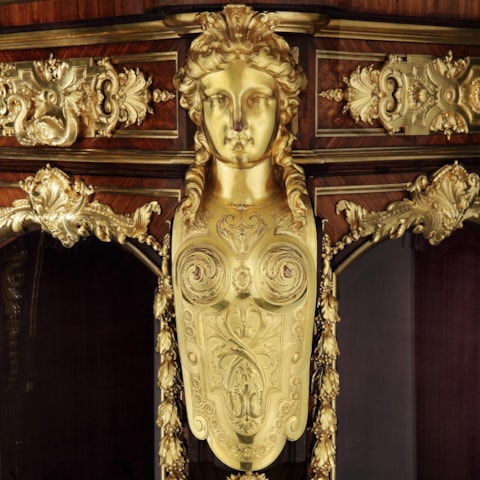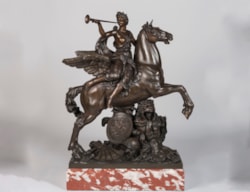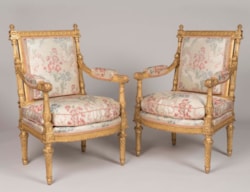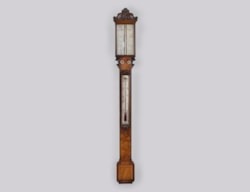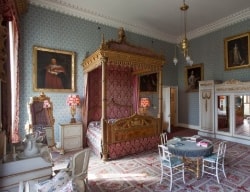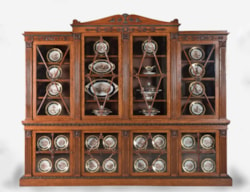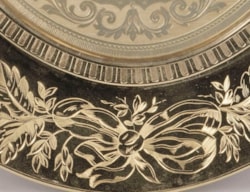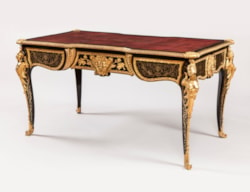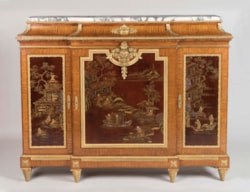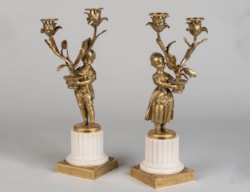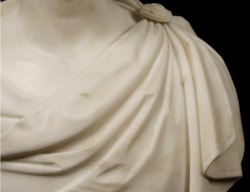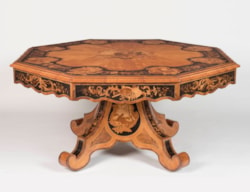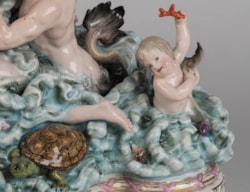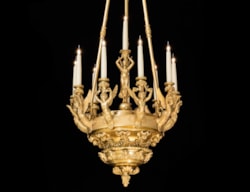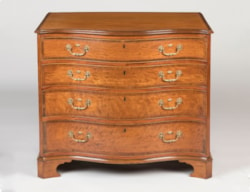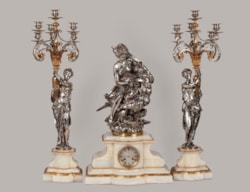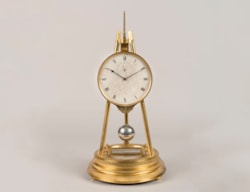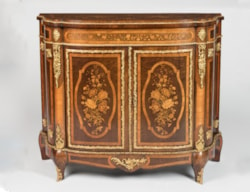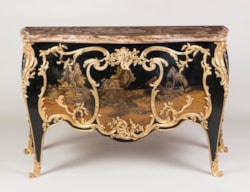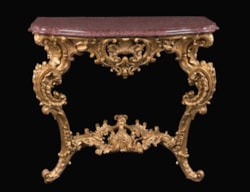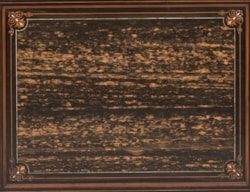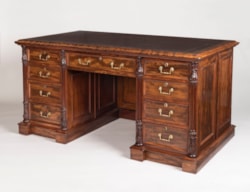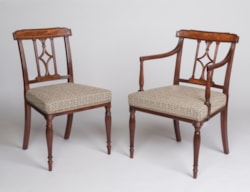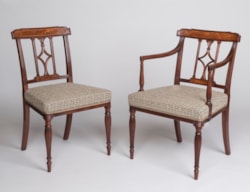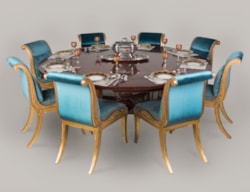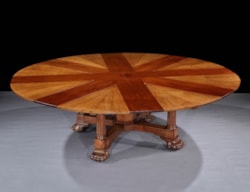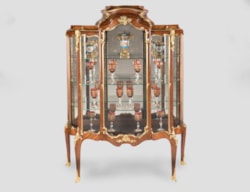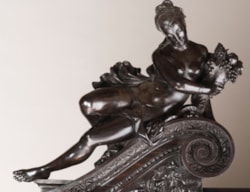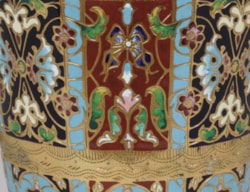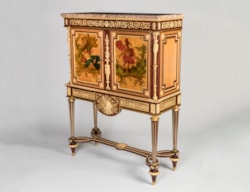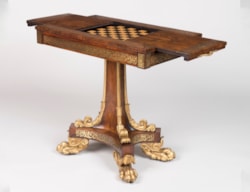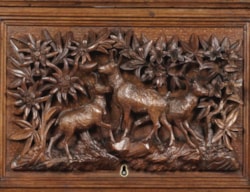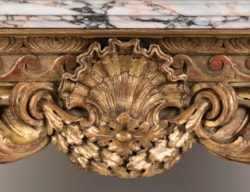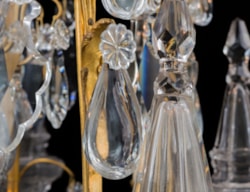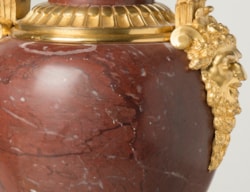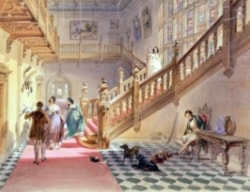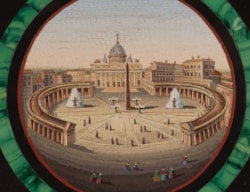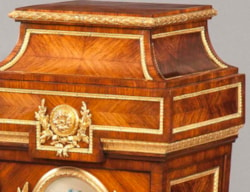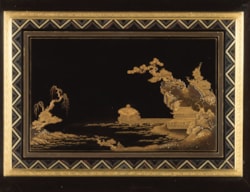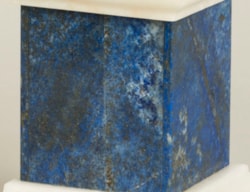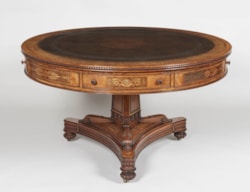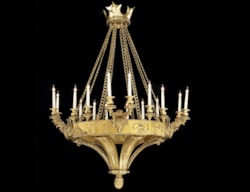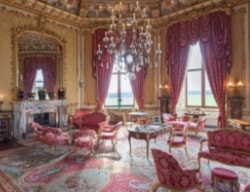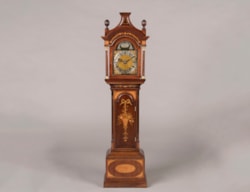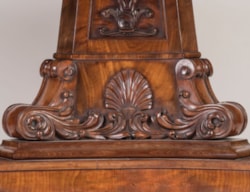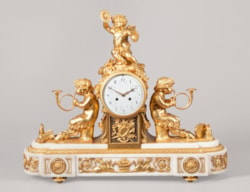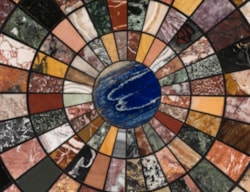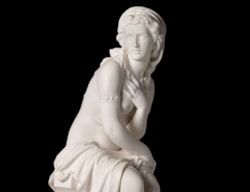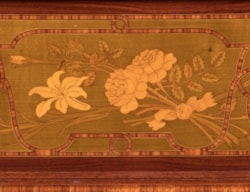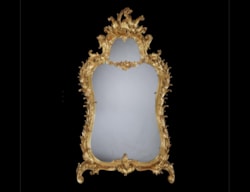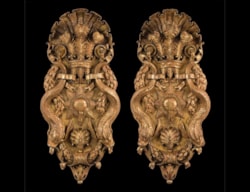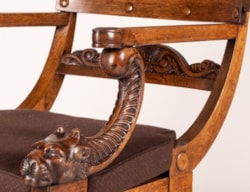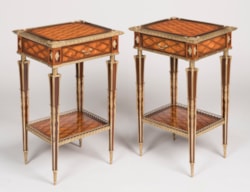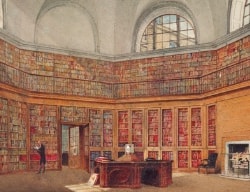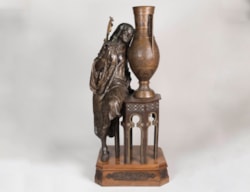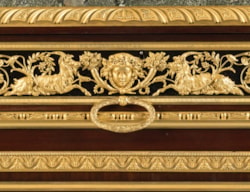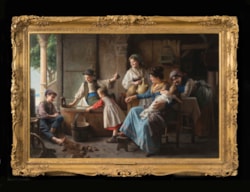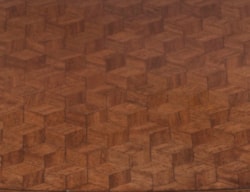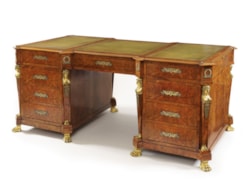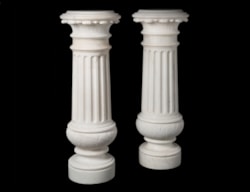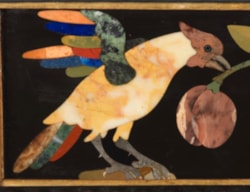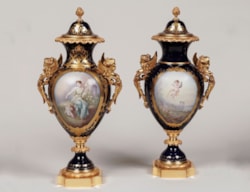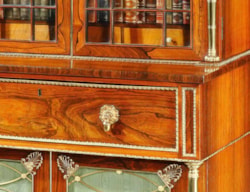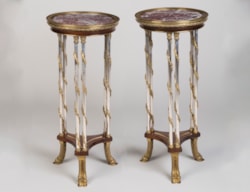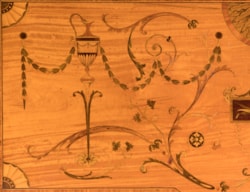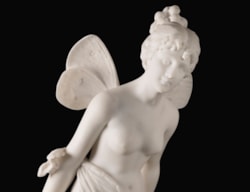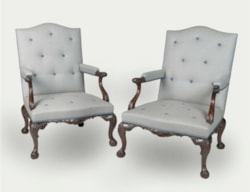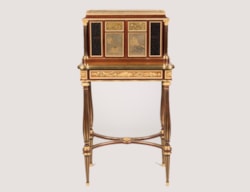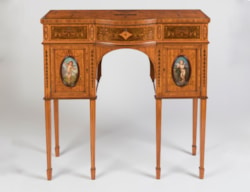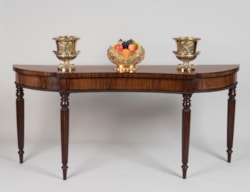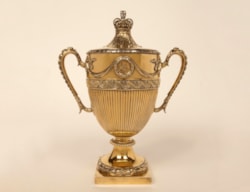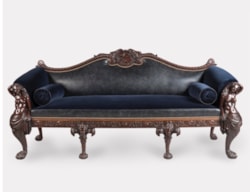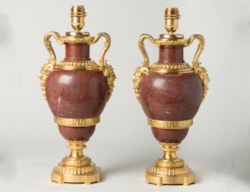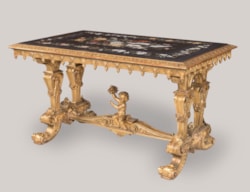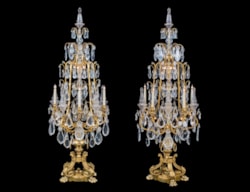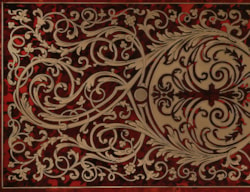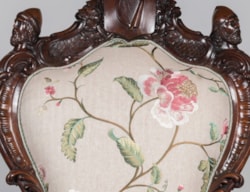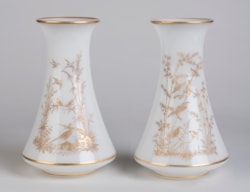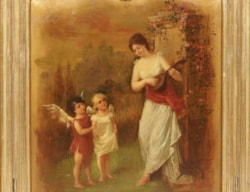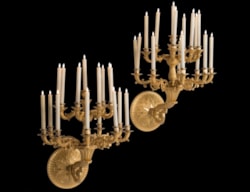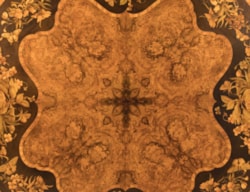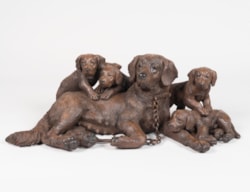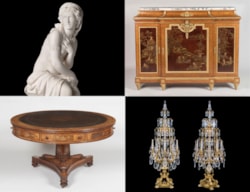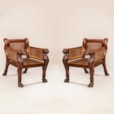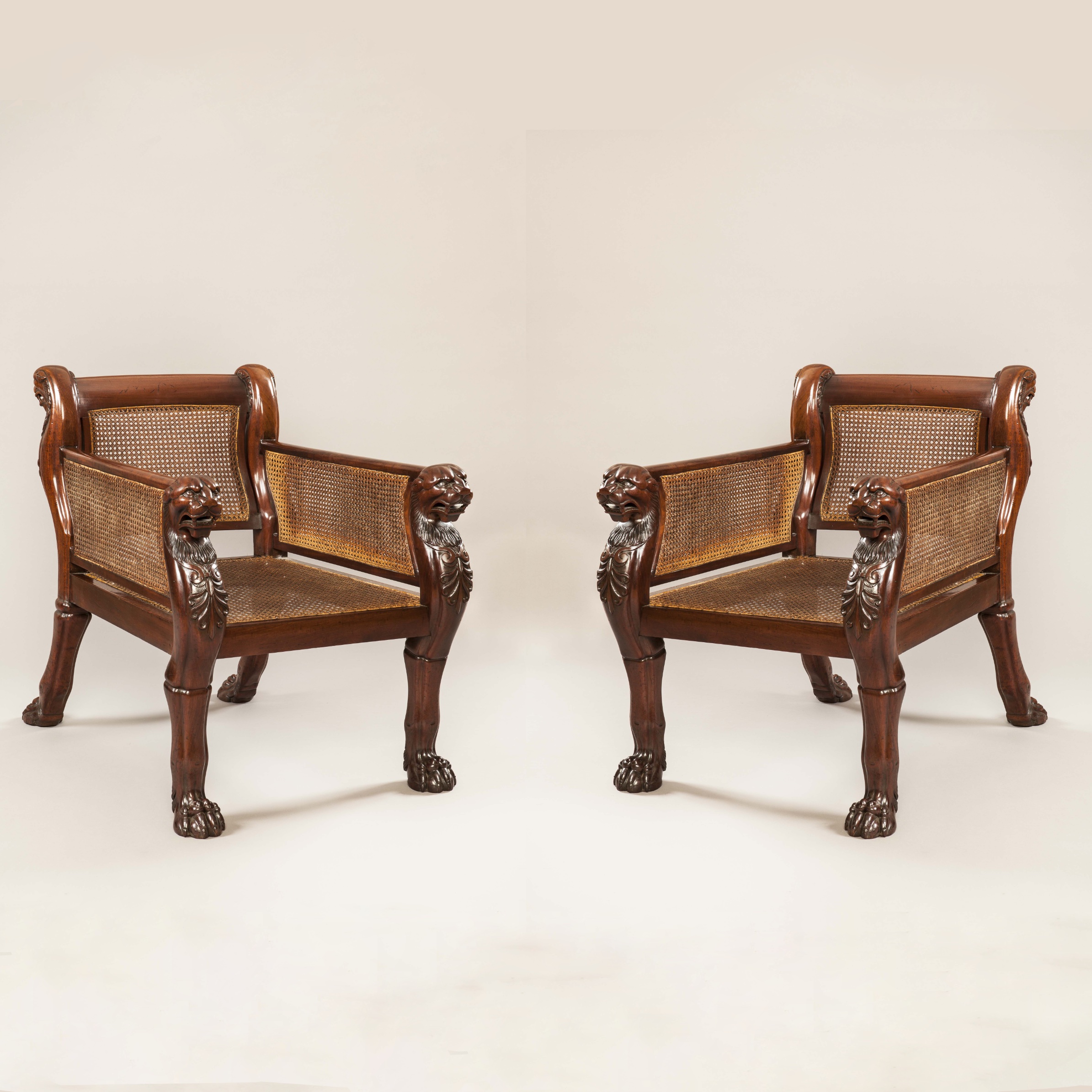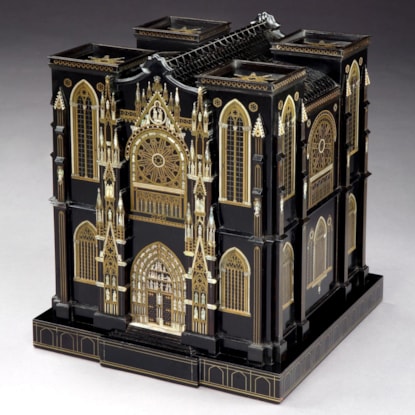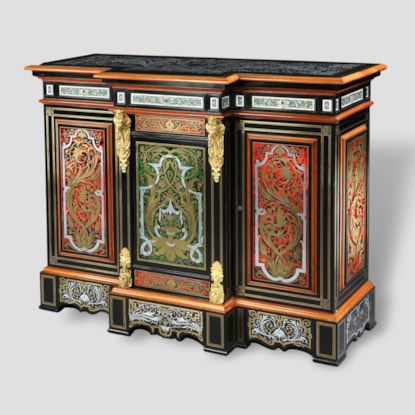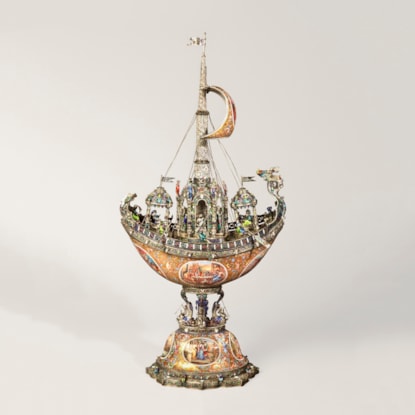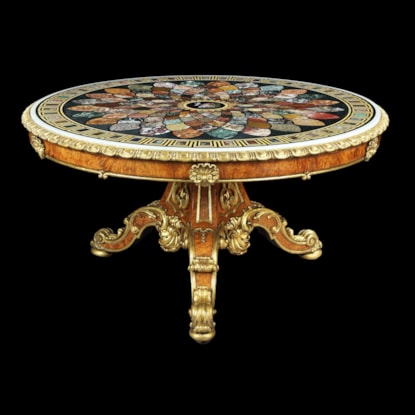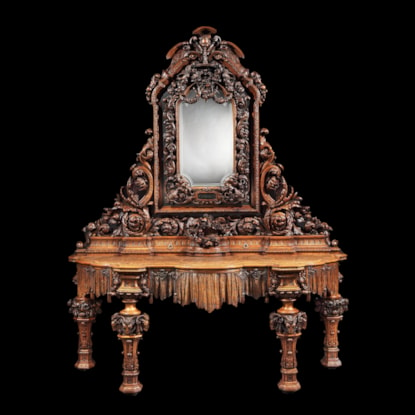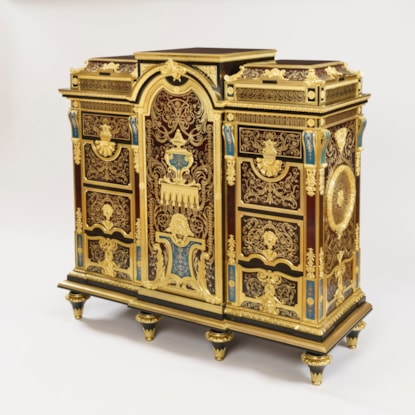Magnificent Pair of Regency Drawing Room Chairs
Magnificent Pair of Regency Drawing Room Chairs
Dimensions: H: 32.5 in / 82 cm | W: 22 in / 55 cm | D: 35 in / 88 cm
Sold
A Magnificent Pair of Regency Drawing Room Chairs
Following a George Smith design
Constructed in a beautifully patinated and faded Cuban mahogany; the finely carved swept front legs rise from taloned feet and terminate in leopard heads, draped with pendant anthemion motifs; having conforming rear legs, conjoining front and side rails; the backs of swept form, the terminals carved with reversed leopard heads with pendant anthemions; the seats, sides and backs are double caned.
Circa 1810
Commissioned by Frederick Vernon Wentworth (b.1795) for Wentworth Castle, South Yorkshire, then acquired by his granddaughter Frederika Charlotte Louisa Rooke (nee Thelluson, d.1954) and her husband Mortimer Rooke (d.1942) and housed at The Ivy, Chippenham, Wiltshire: thence by family descent.
Frederika owned the chairs until her death in 1954 having been brought up at Wentworth Castle by her Uncle Thomas Vernon-Wentworth (1831-1902) and his family, following the early death of her mother Henrietta Thelluson in 1873, when Frederika was twelve years old.
The design of this pair of chairs are based on a design from Plate 56 of ‘Drawing Room Armchairs’ by George Smith, and published in his A Collection of Designs for Household Furniture and Interior Decoration in the Most Approved and Elegant Taste, Upholder Extraordinary To His Royal Highness The Prince of Wales, published by J.Taylor, At the Architectural Library, No.59, High Holborn, 1808.
After the publication of Charles Heathcote Tatham's ‘Etchings of Ancient Ornamental Architecture drawn from the originals in Rome...1794-6, in 1801, one of his drawings from the antique, a leopard headed monopodia was incorporated into the design oeuvre of the Regency period, and appears adorning sideboards, tables, consoles and bookcases, inter alia. This design may be seen in the works of Gillows, Morel & Seddon, and in Clifford Musgrave’s ‘Regency Furniture’ - examples will be seen in Plates 4A, 20A, 22A, 22B, 41A, 43A and 68; Frances Collard, the doyenne of the Regency Period, shows in her ‘Regency Furniture’ further examples on Plates 97, 100, 102 and 143.
‘The Dictionary of English Furniture Makers’, published by the esteemed Furniture History Society records George Smith as ‘Upholder Extraordinary to his Royal Highness the Prince of Wales’ and a contributor to the Bible of the Regency period, Rudolf Ackermann’s ‘Repository of the Arts’, a monthly publication, and traded from Dean Street, Soho, London.
Wentworth Castle
Thomas Wentworth, Baron Raby, had been expecting to inherit the great Wentworth Woodhouse estate from the 2nd Earl of Stafford in 1695 when the estate passed to his cousin Thomas Watson when the 2nd Earl died childless. The passing of Wentworth Woodhouse to the Watsons caused intense rivalry with the Watson's and Thomas Wentworth was determined to surpass the Watsons in splendour of living. Wentworth was a distinguished soldier and diplomat under both William III and Queen Anne with aspirations to establish a claim to the title of Earl of Stafford. When an opportunity to purchase the Stainborough Hall estate, some six miles from Wentworth Woodhouse arose in 1708, Wentworth realised having a country estate would be vital in pursuing his claim to the Earldom and he did indeed succeed with Queen Anne creating him 1st Earl of Stafford (2nd creation) in 1711. Wentworth added a new baroque wing (1709-1715), with designs provided by the military architect Jonann Von Bodt. Wentworth amassed a picture collection in Italy and James Gibbs designed the remarkably picture gallery in 1724 which stretched some one hundred and eighty feet. Nikolaus Pevsner describes the east range "of a palatial splendour uncommon in England". Originally known as Stainborough Castle, Wentworth changed the name to Wentworth Castle on its completion in 1731. In the late 1730's Thomas Wentworth's son William Wentworth, 2nd Earl of Strafford (1722-1791) commissioned Capability Brown to lay out the gardens and created the south facing Palladian wing of the house which was largely his own creation The Stafford title once again became extinct with the death of the 3rd Earl in 1799. The estate passed to the 3rd Earls sister Augusta Wentworth (Mrs Hatfield Kaye) and then to Frederick Vernon-Wentworth in 1802.
The Vernon-Wentworth family added the west wing in the 19th century. The house was sold in 1949 by Captain Bruce Vernon-Wentworth to the Barnsley Corporation. Captain Vernon-Wentworth sold part of the contents of Wentworth Castle at Christie's, 20 November 1919.
You may also like

 Vip access
Vip access

 Favourites
Favourites






